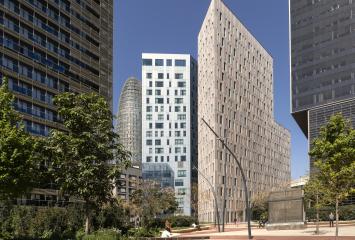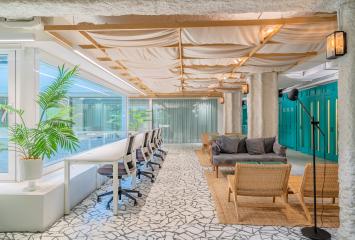Second life for furniture: innovation and sustainability in interior design
The increase in recycling worldwide during these last decades highlights the importance of this practice for the viability of the global production model and the conservation of natural habitats. But recycling is just one of the pillars of the so-called three Rs, which also include reduction and reuse. Without the widespread adoption of these other two, and even with the growing investment in recycling, it is impossible to meet the demand for materials required by humanity without exacerbating the climate crisis. This is precisely where refurbished furniture comes into play, a rising furniture trend with as many possibilities as benefits.
The potential of second-hand furniture
The premise of furniture refurbishment is very simple: no piece of furniture is final, but rather it serves as raw material from which to design furniture with very different characteristics. To achieve this, specialists in the field use a vast array of restoration and transformation techniques that include repairing damaged elements, applying a wide variety of paints such as classic or chalk paint, sanding to remove previous finishes to work more intensely on surfaces, or using varnishes and waxes to brighten structures and provide them with additional protection against the environment.
In this sense, second-hand furniture has almost infinite potential, as with the right methodologies it can take on completely new appearances. However, this practice is not purely aesthetic. Reupholstering a bench can turn it into a comfortable sofa. The use of cutting and assembly can transform a table into a shelf. And so on, endlessly. It's a matter of creativity and placing oneself in the hands of experienced professionals. They know the path to functional transformation. This path represents savings for the wallet of those decorating a home or office, as well as a relief from the pressure on natural resources.
The benefits of furniture refurbishment
The main benefit of furniture refurbishment, as we have repeatedly pointed out throughout this article, is environmental care, as it involves a lower demand for new resources, less energy consumption, and, very importantly, a reduction in waste that ends up in landfills. In addition, refurbishment also leads to lower economic expenses, a higher level of customization than what is available in the new market, and, in some cases, greater preservation of furniture heritage. After all, some pieces of furniture are part of family or even social culture.
And we must not forget the experiential aspect. Ultimately, refurbishment can be carried out by third parties or, when the furniture is for home use, through one's own learning and execution. In these cases, reusing old furniture provides the opportunity to acquire new skills, unleash imagination, and, in short, enjoy the creation process in a way that simply buying new furniture does not allow. Moreover, being part of the refurbishment process creates a much stronger bond with the furniture, which can affect the feelings experienced when surrounded by it.

